Sulphides: Pyrite (sulfuric or iron pyrite)
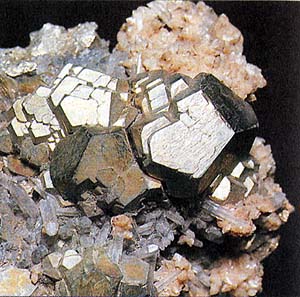 Diagnostic card.
Diagnostic card.
Crystals of perfect shape in the enclosing mass of quartz
Fe S 2
Cubic amount of cubic zirconia
Hardness 6,5
Specific gravity 5
Cleavage is absent
Cracked shell
Yellow color
Color in powder gray
Glitter metal
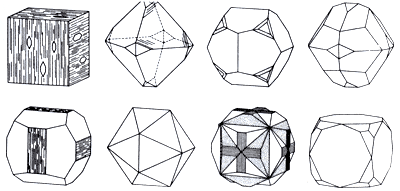
The name "pyrite" originated from the Greek. "Pyr" is fire, as when a blow a mineral emits sparks. The name "marcasite" sometimes used is incorrect: true marcasite is a polymorph of pyrite that is not suitable for processing, which in the air is easily oxidized and crumbles into powder. Inclusions of pyrite in the rock shine "like gold," and in the people it is sometimes called cat's gold and gold of fools. Often there are well-formed crystals with a strong metallic luster.
Pyrite is widespread everywhere. The Incas used pyrite as mirrors. Currently, pyrite is cut by small roses or used as an accompanying stone instead of small diamonds.
Pyrite is an easily recognizable and very common mineral. Known since antiquity. Often there are crystals of perfect form. Its cubes with smooth or shaded faces are easily recognizable. Sometimes their vertices are cut off by triangular faces of the octahedron. There is also a pentagon dodeca-edric form; In this case, the individual pentagonal faces are not equal to each other. Twins are very common, but it is difficult to recognize them. Twinning in the form of an "iron cross" is a typical combination of two pentagonal dodecahedrons.
Diagnostic signs.
Due to the brass-yellow color, metallic brilliance and lack of cleavage, pyrite resembles gold. But unlike it, pyrite is easily oxidized; It is harder (not scratching with a knife). In humid conditions, it decomposes, forming sulfuric acid and other products (brown-black iron oxides and white fibrous sulfates). Under the influence of fire, pyrite burns with a blue flame with a strong smell of sulfur. It can be confused with gold and chalcopyrite.
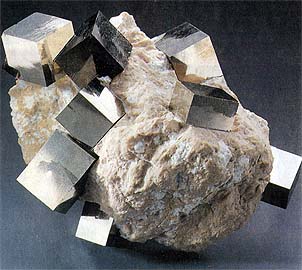
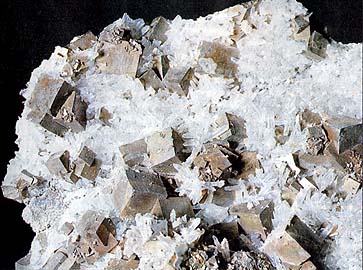
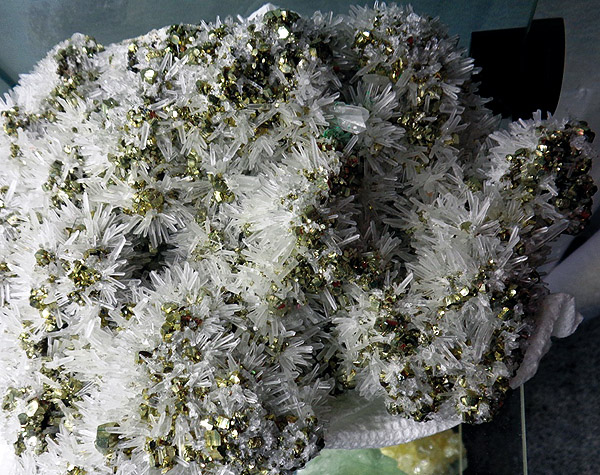
Pyrite on white quartz. Ouancala, Peru. More than 30 cm. Photo: © А.А. Evseev.
Origin.
Pyrite is a very common mineral that can form in various geological conditions, primarily in hydrothermal veins along with other sulphides; Also in metamorphic rocks - serpentinites and marbles. Almost always it forms perfect crystals, although massive aggregates also occur.
Place of Birth.
It occurs quite often all over the world. Deposits of jewelry pyrite are on the Elbe (Italy).
Application.
Pyrite produces iron and sulfur. During combustion, iron oxide is obtained from which the metal is recovered. Sulfur is reduced after combustion and sulfuric acid is obtained, which is used in many industrial processes.
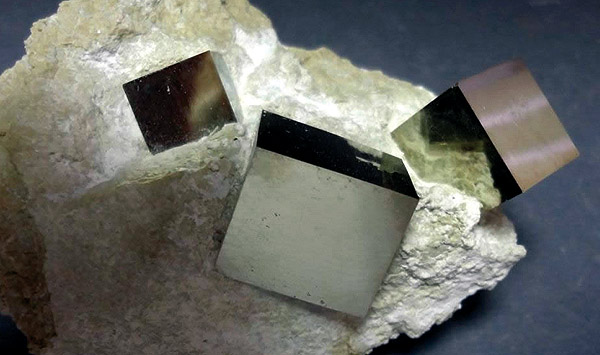

Pyrite (crystals up to 2 cm) in the parent rock. Navahun, Spain (EU). Photo: © А.А. Evseev.
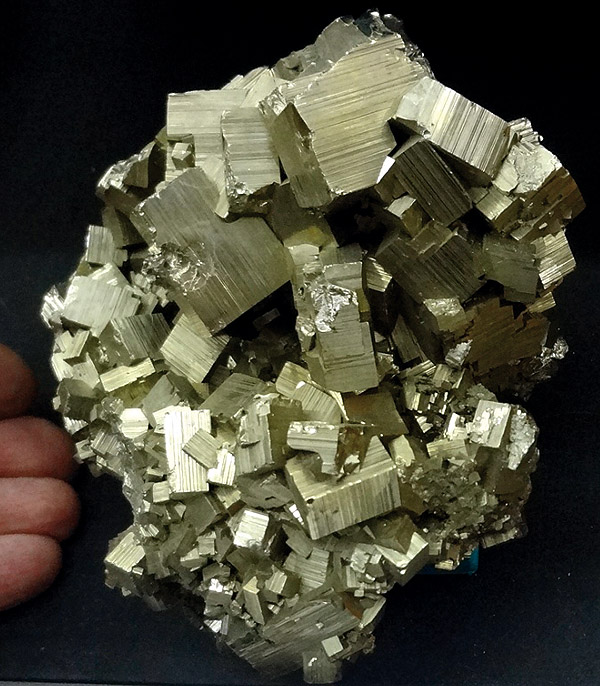
Pyrite. Cubic acid. Crystals of pyrite. Berezovsk, Wed. Ural, Russia (RF, CIS). Photo: © А.А. Evseev.
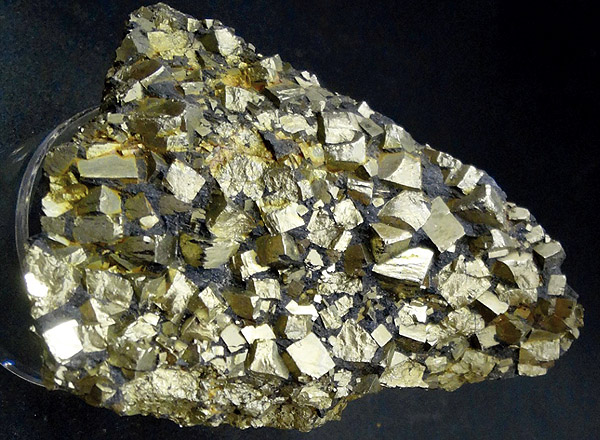
Pyrite (golden). A drusen aggregate of cubic crystals (about 0.7 cm) of pyrite from sulfur
Shale rock. Strait of Ugra Shar, Novaya Zemlya, Russia (RF, CIS). Photo: © А.А. Evseev.
- Ghetchellit - "New Almaden blend" - arsenide and antimony sulfide (modern sulfosol)
- Antimony is a toxic metal (semimetal) , widely used in metallurgy, medicine and engineering
- Zirconium - a rare and undiscovered metal and the most dangerous precious stone in oxide and salt
- Gold - yellow dangerous and poisonous metal of modern accurate digital and cable technologies
- Sulfur is a golden-yellow toxic substance and a sign of active volcanic activity
- Cadmium is an undisputed toxic silvery metal unknown to a wide range of people
- Lead - a toxic gray imitator of metallic silver and toxic metal blende
- Arsenic is a classic poison of medieval and modern poisoners and medicine in medicine
Poisonous and radioactive dangerous stones and minerals
** - poisonous stones and minerals (mandatory check in the chemical laboratory + explicit indication of toxicity)
** - radioactive stones and minerals (mandatory check on the standard dosimeter + ban on open sales in case of radioactivity exceeding 24 milli / g / h + additional measures of population protection)
Catalog of minerals and semi-precious stones of the world by groups
** - poisonous stones and minerals
** - radioactive stones and minerals


Comments
When commenting on, remember that the content and tone of your message can hurt the feelings of real people, show respect and tolerance to your interlocutors even if you do not share their opinion, your behavior in the conditions of freedom of expression and anonymity provided by the Internet, changes Not only virtual, but also the real world. All comments are hidden from the index, spam is controlled.